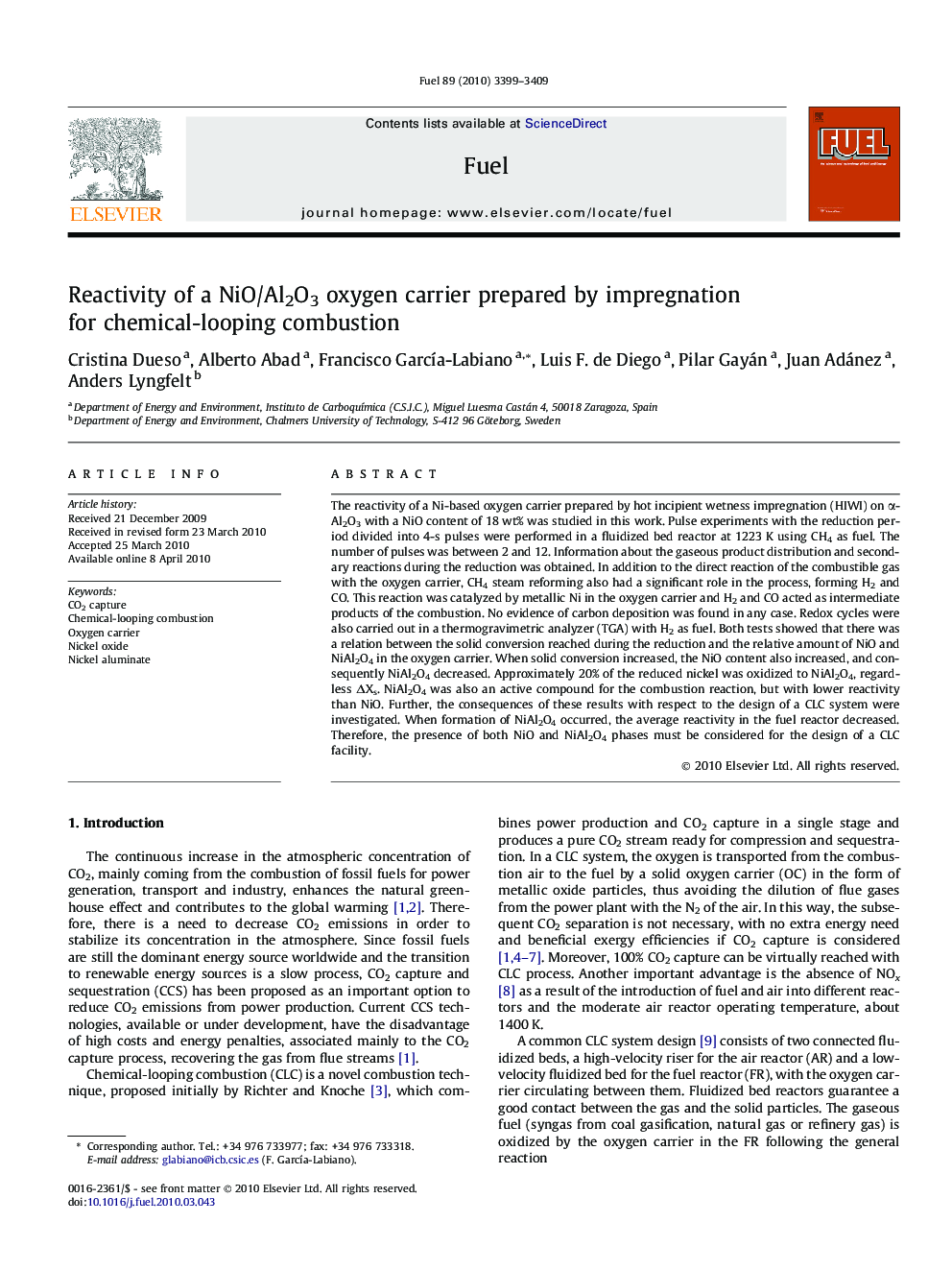| Article ID | Journal | Published Year | Pages | File Type |
|---|---|---|---|---|
| 206856 | Fuel | 2010 | 11 Pages |
The reactivity of a Ni-based oxygen carrier prepared by hot incipient wetness impregnation (HIWI) on α-Al2O3 with a NiO content of 18 wt% was studied in this work. Pulse experiments with the reduction period divided into 4-s pulses were performed in a fluidized bed reactor at 1223 K using CH4 as fuel. The number of pulses was between 2 and 12. Information about the gaseous product distribution and secondary reactions during the reduction was obtained. In addition to the direct reaction of the combustible gas with the oxygen carrier, CH4 steam reforming also had a significant role in the process, forming H2 and CO. This reaction was catalyzed by metallic Ni in the oxygen carrier and H2 and CO acted as intermediate products of the combustion. No evidence of carbon deposition was found in any case. Redox cycles were also carried out in a thermogravimetric analyzer (TGA) with H2 as fuel. Both tests showed that there was a relation between the solid conversion reached during the reduction and the relative amount of NiO and NiAl2O4 in the oxygen carrier. When solid conversion increased, the NiO content also increased, and consequently NiAl2O4 decreased. Approximately 20% of the reduced nickel was oxidized to NiAl2O4, regardless ΔXs. NiAl2O4 was also an active compound for the combustion reaction, but with lower reactivity than NiO. Further, the consequences of these results with respect to the design of a CLC system were investigated. When formation of NiAl2O4 occurred, the average reactivity in the fuel reactor decreased. Therefore, the presence of both NiO and NiAl2O4 phases must be considered for the design of a CLC facility.
